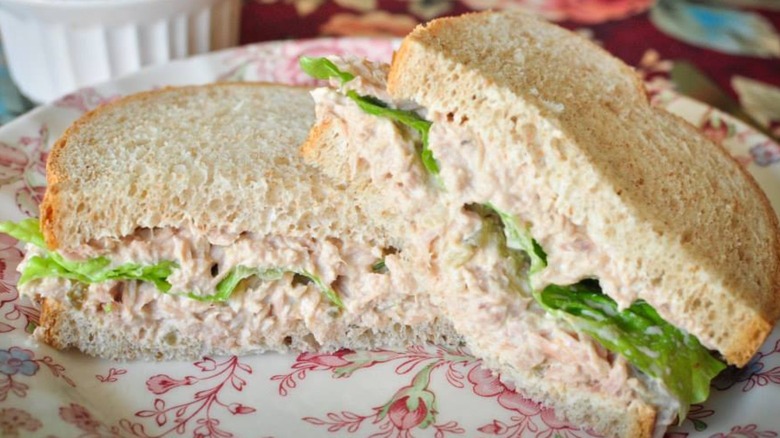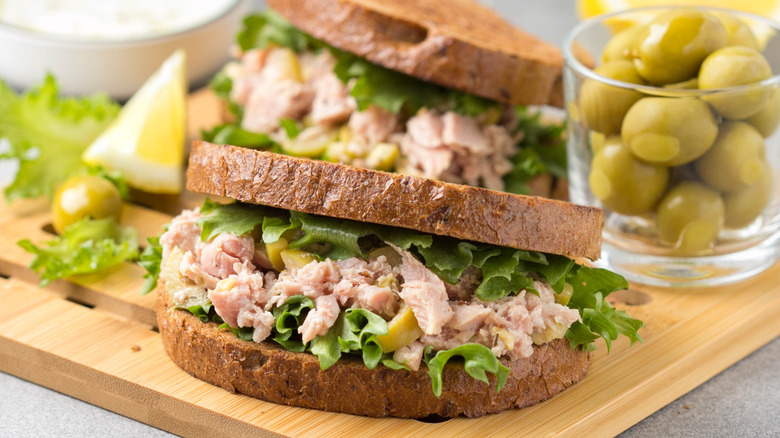How To Avoid A Soggy Tuna Salad Sandwich
Nothing beats a well made tuna salad sandwich. Many of us might make one for lunch today and, because they tend to be so divine, pack what's leftover for tomorrow. But how many times have we unwrapped our lunches to be greeted by the disappointing sight of a sopping wet, fishy mess?
The tuna sandwich has been around for more than a century, meaning people have been combatting soggy sandwiches for dozens of decades. One early reference to the meal was in an (outdated) cookbook released in 1893 called "Beverages and Sandwiches for Your Husband's Friends." The recipe on page 38 of the book, written specifically for women as a "way to a man's heart," resulted in the most basic tuna sandwich ever. Back then, housewives following the recipe would simply have to shred some canned tuna, squeeze a bit of lemon onto it, and serve it on unbuttered bread.
Thanks to the advent of condiments like mayo, Dijon mustard, and olive oil, the standard tuna salad recipe is not as simple anymore — but it still begs the question: How do we keep tuna salad sandwiches from getting soggy?
Soggy tuna salad solutions
After one bad experience with a soggy tuna salad sandwich, some may avoid the disappointment by not packing it for lunch again. Fortunately, there are simple solutions to common tuna salad mistakes.
As is the case with any sandwich, a successful tuna salad needs a solid foundation: the right kind of bread. Sturdy loaves like sourdough and rye are denser and more leak-proof than white sandwich bread, and toasting them will further minimize any sogginess, per Oola. The next line of defense is the type of spread you use and where you put it. Anything fatty will help insulate the bread against the moisture in the salad — mayo is good, and butter may be even tastier. Take the liquid blockage a step further in the style of nutritionist Ellie Krieger by lining both slices of bread with whole leaves of lettuce.
Further, keeping the moisture levels of the tuna salad to a bare minimum means there will be less liquid to seep into the sandwich. Be sure to drain your tuna completely and avoid adding very wet ingredients to the salad (like lemon juice or tomatoes) if you're not going to eat it right away. Last but not least: What you wrap your sandwich with makes all the difference. Avoid plastic and opt for paper towels instead, as one Reddit user likes to do. Like you, your food needs to breathe.

